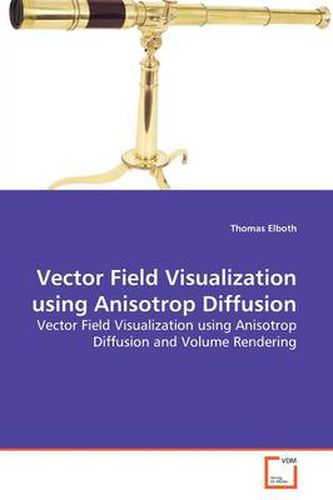Readings Newsletter
Become a Readings Member to make your shopping experience even easier.
Sign in or sign up for free!
You’re not far away from qualifying for FREE standard shipping within Australia
You’ve qualified for FREE standard shipping within Australia
The cart is loading…






This title is printed to order. This book may have been self-published. If so, we cannot guarantee the quality of the content. In the main most books will have gone through the editing process however some may not. We therefore suggest that you be aware of this before ordering this book. If in doubt check either the author or publisher’s details as we are unable to accept any returns unless they are faulty. Please contact us if you have any questions.
Vector fields are normally the result of computer simulations, or measurements, done in a number of scientific fields. This can be in fluid dynamics, meteorology, medicine, climate modeling and oil exploration, just to mention a few. To be able to understand and interpret these data, we normally need to transform them into images. A good image will hopefully also help us in obtaining new insight into the underlying physics. To display an image of a 2D vector fields is fairly simple. However, meaningful images of 3D fields are much more challenging to produce, as cluttering and occlusion often obscure important details. In this work we present a techniques that solve some of these issues, and produce high quality images and animations of 2D and 3D vector fields. This is done by solving a partial differential equation (PDE) for anisotropic diffusion, and displaying the results in modern Volume Rendering software.
$9.00 standard shipping within Australia
FREE standard shipping within Australia for orders over $100.00
Express & International shipping calculated at checkout
This title is printed to order. This book may have been self-published. If so, we cannot guarantee the quality of the content. In the main most books will have gone through the editing process however some may not. We therefore suggest that you be aware of this before ordering this book. If in doubt check either the author or publisher’s details as we are unable to accept any returns unless they are faulty. Please contact us if you have any questions.
Vector fields are normally the result of computer simulations, or measurements, done in a number of scientific fields. This can be in fluid dynamics, meteorology, medicine, climate modeling and oil exploration, just to mention a few. To be able to understand and interpret these data, we normally need to transform them into images. A good image will hopefully also help us in obtaining new insight into the underlying physics. To display an image of a 2D vector fields is fairly simple. However, meaningful images of 3D fields are much more challenging to produce, as cluttering and occlusion often obscure important details. In this work we present a techniques that solve some of these issues, and produce high quality images and animations of 2D and 3D vector fields. This is done by solving a partial differential equation (PDE) for anisotropic diffusion, and displaying the results in modern Volume Rendering software.